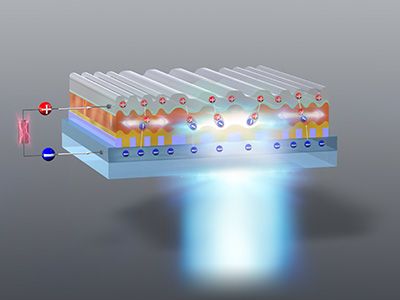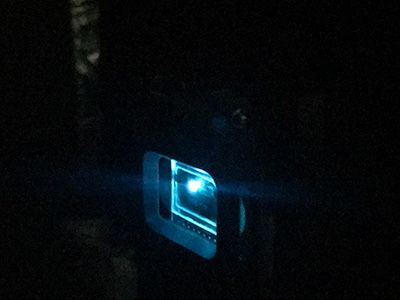Research Results
Creating New Organic Electroluminescent Materials and Device
Groups with a New Light Emission PrincipleFY2020
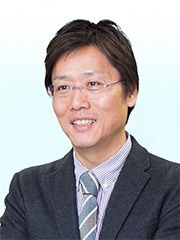
- Chihaya Adachi (Professor/Director, Center for Organic Photonics and Electronics Research (OPERA), Kyushu University)
- CREST
- Realization of Organic Laser Diodes and the Device Physics
- ERATO
- ADACHI Molecular Exciton Engineering Project
Development of a new organic electroluminescent material through exciton engineering
In recent years, we have seen rapid progress in the adoption of organic light-emitting diodes (OLEDs) for large-screen displays in addition to PC monitors and smartphone displays. Currently, first-generation and second-generation organic electroluminescent materials for OLEDs are most common, being divided into “fluorescent materials” and “phosphorescent materials” based on differences in their light emission principles. However, they both have tradeoffs in terms of light emission efficiency and lifespan. In contrast, Professor Adachi Chihaya, research supervisor of the ERATO “Adachi Molecular Exciton Engineering Project,” focuses on a new light-emitting principle known as “thermally activated delayed fluorescence (TADF).” This principle forms the basis of third-generation OLED materials, and, through skillful molecular structure design, TADF materials are the first emitters to achieve approximately 100% electroluminescence emission quantum efficiency without including any precious metals. At his ERATO project, “Exciton engineering” is proposed to be the cause of this success, and the ERATO researchers have been discovering organic persistent luminescence materials for developing applications with TADF materials and foundational technologies for perovskite phosphors. Moreover, the researchers successfully achieved current-injection lasing from an organic thin-film semiconductor for the first time in the world. Their accomplishments have been published in scientific journals such as Nature and Science Advances, and they are currently receiving international attention in the research fields of organic electronics and photochemistry. Additionally, Professor Adachi, during the ERATO period, established two venture companies and is promoting technology transfer.
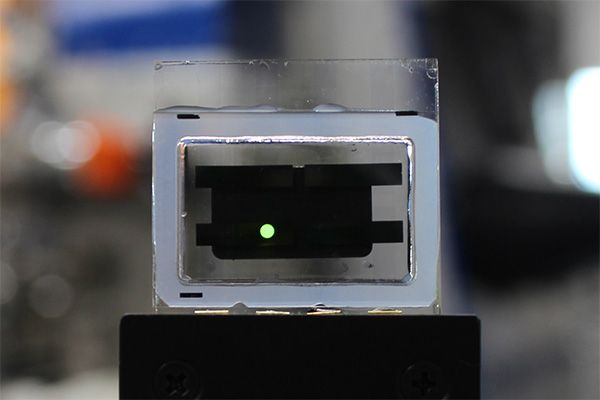
Figure 1 Light-emitting diode (LED) developed in 2019 with TADF materials inserted between metal halide perovskites
Focus on the new light-emission principles of “thermally activated delayed fluorescence (TADF)”
The key to the TADF materials developed by Professor Adachi is the exciton. Normally, when shining light on OLED materials, the molecules in the material transition from the ground state, wherein energy is at its lowest, to the excited state, where energy is higher. At this time, the electrons surrounding the molecules move from the ground state orbit to a separate orbit, and the orbits that the electrons have left make positive holes with a positive charge. In the case of semiconductors, a pair consisting of an excited electron and positive hole are in a state in which they are linked with Coulomb force. This is referred to as an exciton. As the excited state is unstable for the organic compound, it tries to return to the ground state. At this time, the difference in energy between the excited state and the ground state is discharged as light, causing the light emission. Professor Adachi has a deep understanding of the principles and characteristics of excitons, and he has used this insight to create new OLED materials. What was focused on at this time was the light-emitting principles of TADF.
TADF is a phenomenon in which light is emitted after an exciton that is in a triplet state T1, as shown in Figure 2, transitions to singlet state S1 by absorbing heat. Professor Adachi has considered that, if this process could be skillfully encouraged, the light-emitting efficiency of fluorescent materials could be increased to virtually 100%, like phosphorescent materials. From thereon, he started to research and develop TADF materials. Then, through quantum chemical calculations, organic compounds that can easily produce TADF were calculated so that the S1 and T1 energy were as small as possible. Additionally, it was noticed that, for this purpose, the overlap between the ground state highest occupied molecular orbital (HOMO) and the excited state lowest occupied molecular orbital (LUMO) should be made small. Based on this principle, Professor Adachi synthesized and analyzed 300 types of organic compounds. The result was that, in 2012, the energy difference between S1 and T1 was virtually zero; in other words, they were successful in discovering TADF materials with virtually 100% light-emitting efficiency. This was a compound group known as “dicyanobenzene derivatives,” and through this discovery, a new OLED material demonstrating high light-emitting efficiency at low cost was born.
-
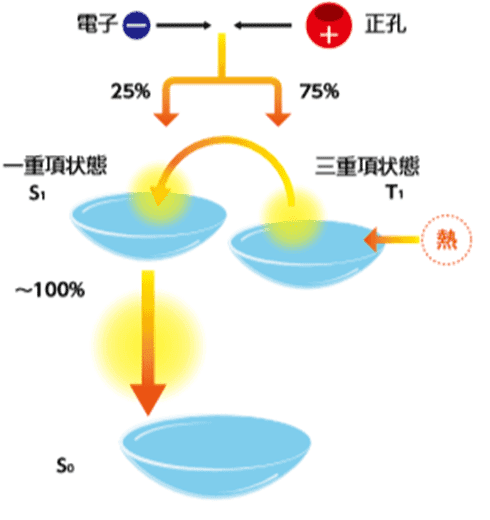
Light emission principle of “thermally activated delayed fluorescence (TADF)”
-
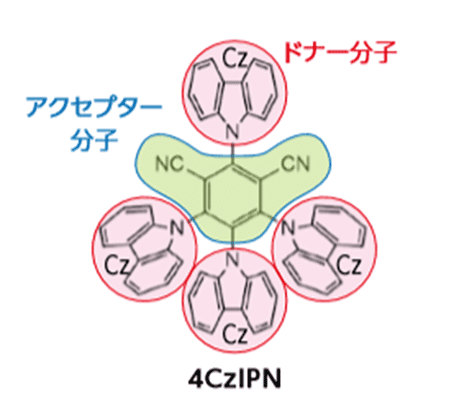
The structure of a TADF light-emitting material. This is a structure in which two of the six hydrogens in the central benzene ring are replaced with cyano groups (CN), while the remainder are replaced with carbazole groups (Cz).
Figure 2 The light-emitting principle known as “thermally activated delayed fluorescence (TADF)” and the structure of a TADF material (right), which has the key characteristic of having one donor molecule providing electrons and an acceptor molecule connected together in one molecule
Development of an advanced performance device using OLED materials, such as TADF materials
In his ERATO project, which began in 2013, Professor Adachi espoused “exciton engineering” and engaged in the establishment of the underlying principles of excitons and the creation of new OLED materials and high-performance devices based around TADF materials. This resulted in the discovery of the fundamental technology of organic persistent luminescence and perovskite luminescent materials as TADF derivative technologies. Furthermore, using new OLED materials, he successfully demonstrated the world's first organic thin-film semiconductor laser directly excited by electrical current.
Currently, existing semiconductor lasers are based on inorganic materials, but the newly developed organic thin-film semiconductor laser, in contrast, has the characteristic that it can arbitrarily oscillate between wavelengths over a wide range, from visible light to infrared light. This promises to enable applications in optical communications and sensing, as well as for displays. Whereas, originally, photoexcitation using ultraviolet rays powered the lasers, excitation by injection of electrical current was realized in May 2019, with the necessary conditions for practical use.
Furthermore, in October 2017, based around group leader Kabe Ryota, assistant professor of the Kyushu University Center for Organic Photonics and Electronic Research (currently associate professor of Okinawa Institute of Science and Technology Graduate University), the world’s first persistent luminescence materials based on organic materials were successfully developed. Existing materials with long-lived emission were all inorganic materials, and rare metals, such as europium, were used. As the high-temperature treatment at 1,000 ℃ or above, required for synthesis, was reflected in the manufacturing costs, their uses were limited. In contrast, the persistent luminescence materials developed by Assistant Professor Kabe do not contain any rare metals and can be easily dissolved in solvents, so they can be used as a coating for a wide variety of surfaces. They are easy to make, can be formed by simply mixing electron donor materials and acceptor materials together, and promise to be used in practical applications at an early stage.
On the other hand, in July 2019, the team based around Associate Professor Matsushima Toshinori of the Kyushu University Center for Organic Photonics and Electronic Research succeeded in developing light-emitting diodes (LEDs) with thick-film metal halide perovskite layers as the carrier transport layers. Conventional OLEDs require the formation of a thin film of approximately 100 nanometers uniformly over a wide area to pass current to the emitting material. However, Associate Professor Matsushima et al. developed a device using organic light-emitting materials with a total device thickness that was ten times thicker, achieving excellent light-emitting efficiency, drive voltage, and durability. This could help pave the way for the development of high-performance, next-generation displays.
Image of operating current-injection-type organic semiconductor laser diodes (OSLDs)*1
Figure 3 Image of the operation of current-injection-type organic thin-film semiconductor lasers (left) and oscillation (right) presented in May 2019 (right)
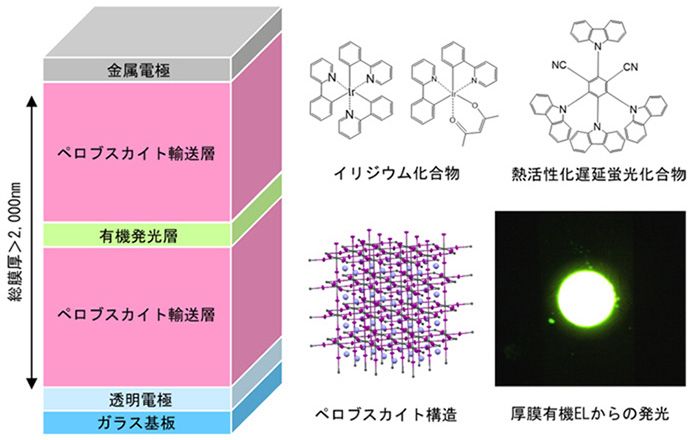
Figure 4 Structure of light-emitting diodes (LEDs) developed in 2019 in which an organic light-emitting layer, such as TADF materials, is inserted between metal halide perovskite layers. This promises to increase light-emitting efficiency and be used for high-performance next-generation displays.
*1 Current-injection-type organic semiconductor laser (OSLD): To laser oscillate the organic molecules, it is necessary to provide the organic molecules with energy from the outside and form a high density of organic molecules in the excited state. Methods using light, such as ultraviolet rays, as the external energy to form the excited states are referred to as light excitation (e.g., the light-excitation organic thin film laser realized on this occasion) and methods that form the excited state using electrical current as the external energy are called current injection.
Two Kyushu University venture companies aiming for practical use
Professor Adachi, in March 2015, established Kyulux (Fukuoka City) as a Kyushu University venture company. In 2016 and 2018, the company received financing from the Support Program of Capital Contribution to Early-Stage Companies (SUCCESS), and it was also selected for the A-STEP NexTEP-B in 2017. Currently, foundational research on TADF materials is being promoted at the university, and Kyulux is working on practical applications. Additionally, in relation to organic thin-film semiconductor lasers, KOALA Tech Inc. was established as a Kyushu University venture company in March 2019. This company is taking the main role in planning how to proceed with finding a practical use for the technology.
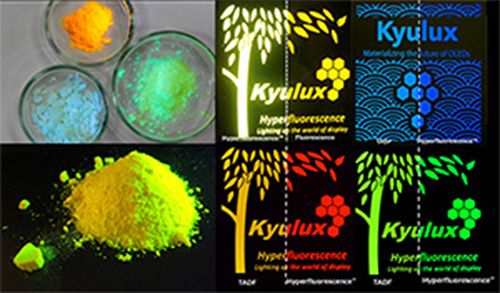
Figure 5 OLED panel announced by Kyulux. Kyulux was selected by the Minister of Economy, Trade and Industry for the JST’s Award for Academic Startups 2019.

